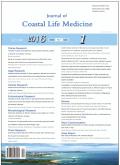Phytochemical analysis, in vitro antioxidant and antibacterial activities of root extracts of Carduus macracanthus
引用次数: 4
Abstract
Medicinal plants have played a pivotal role in the primary healthcare and formed the basis of traditional systems of medicines. They are effective in the treatment of infectious diseases while simultaneously mitigating many side effects that are often associated with synthetic antimicrobials. A disease that caused through pathogenic microorganisms is the major cause of deaths across the world. Increasing cases of drug resistance, unwanted side effects of existing antibiotics and the reappearance of earlier known infections lead to the need for new, safe and effective antimicrobial agents[1-3]. Thus, phytoconstituents such as phenolics are being considered to be safe and provide lesser chances for microbes to develop drug resistance. Oxidative stress is mainly caused by the reactive oxygen species (ROS) such as hydroxyl radical (·OH), peroxide (ROO·) and superoxide radicals (O2· ). These reactive oxygen species are classes of compounds formed from oxygen metabolism, and are able to cause severe damage to cells and tissues. The effect of oxidative stress is linked to cardiovascular diseases, cancer, inflammatory diseases and many other health issues. Antioxidants are significant agents in reducing oxidative stress which damages cells and biological molecules[4]. Natural antioxidants such as bioactive flavonoids are of great ARTICLE INFO ABSTRACT马齿苋根提取物的植物化学分析、体外抗氧化和抗菌活性
药用植物在初级保健中发挥着关键作用,并构成了传统药物体系的基础。它们在治疗传染病方面是有效的,同时减轻了许多通常与合成抗菌药物有关的副作用。一种由病原微生物引起的疾病是世界各地死亡的主要原因。耐药性病例的增加、现有抗生素的不良副作用以及早期已知感染的再次出现,导致需要新的、安全有效的抗菌药物[1-3]。因此,酚类等植物成分被认为是安全的,并且为微生物产生耐药性提供的机会较小。氧化应激主要由活性氧(ROS)引起,如羟基自由基(·OH)、过氧化物(ROO·)和超氧化物自由基(O2·)。这些活性氧是由氧代谢形成的一类化合物,能够对细胞和组织造成严重损伤。氧化应激的影响与心血管疾病、癌症、炎症性疾病和许多其他健康问题有关。抗氧化剂是减少氧化应激的重要药物,氧化应激会损害细胞和生物分子[4]。天然抗氧化剂,如具有生物活性的黄酮类化合物是伟大的文章信息摘要
本文章由计算机程序翻译,如有差异,请以英文原文为准。
求助全文
约1分钟内获得全文
求助全文

 求助内容:
求助内容: 应助结果提醒方式:
应助结果提醒方式:


